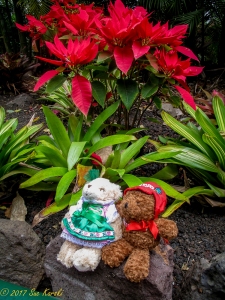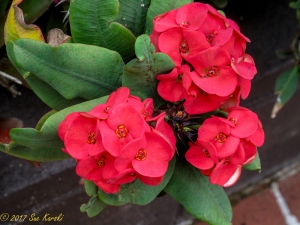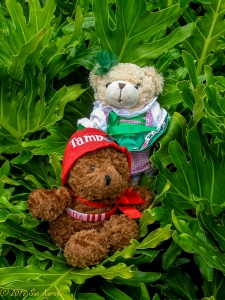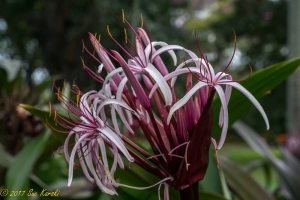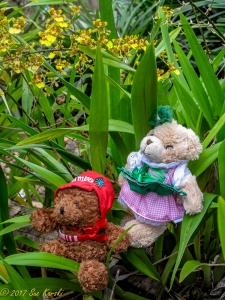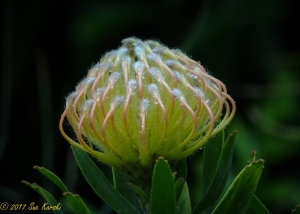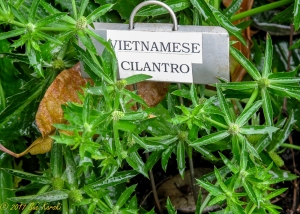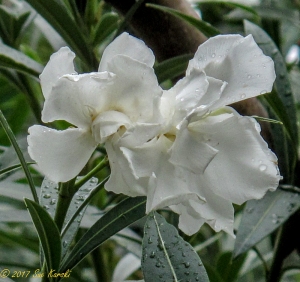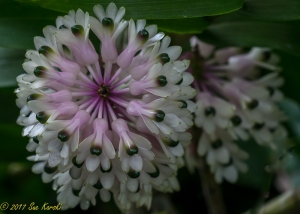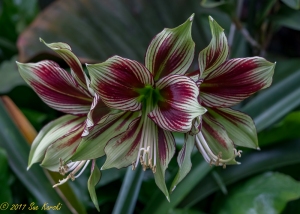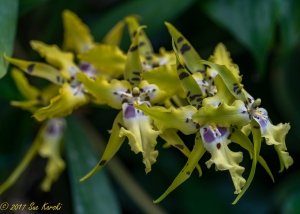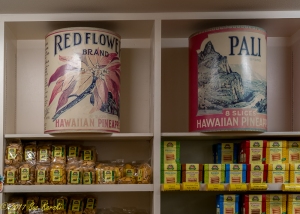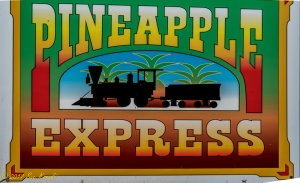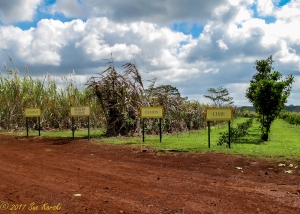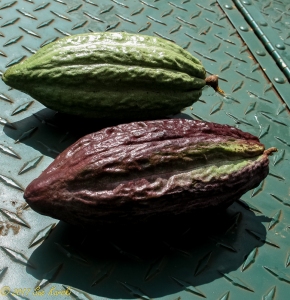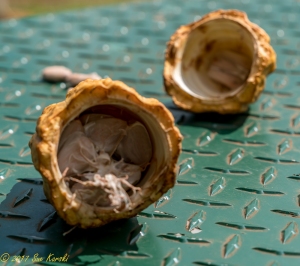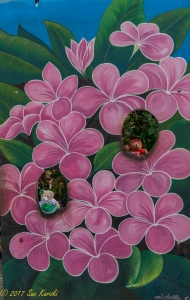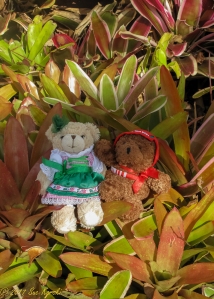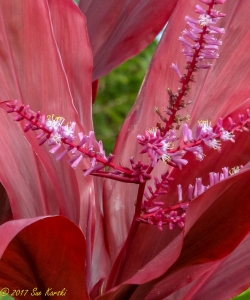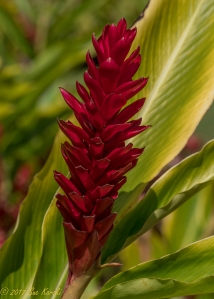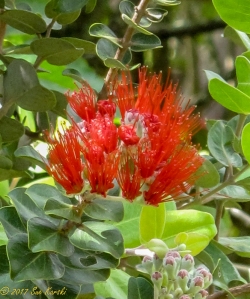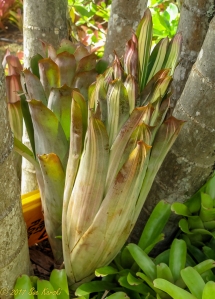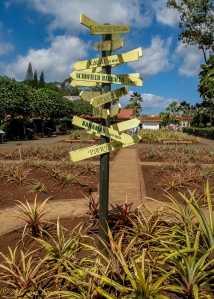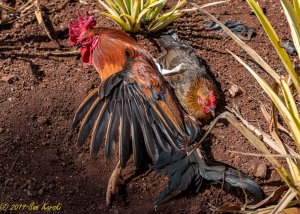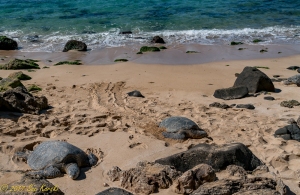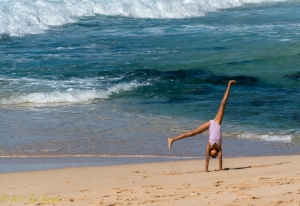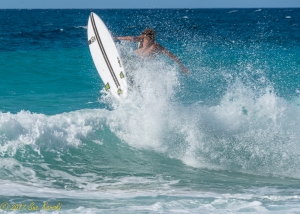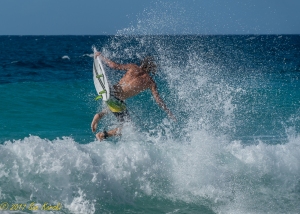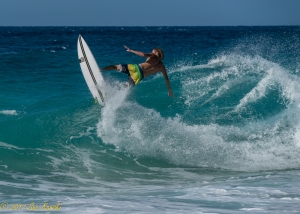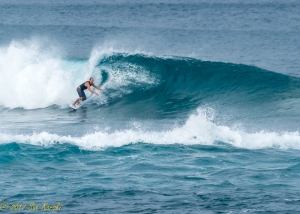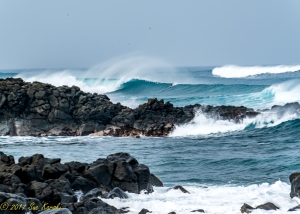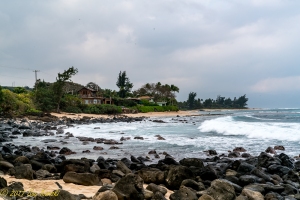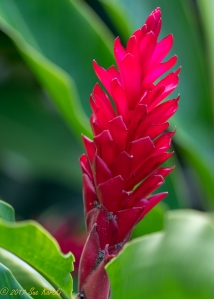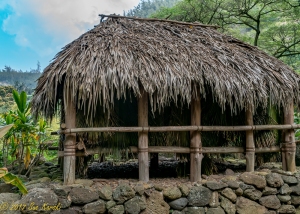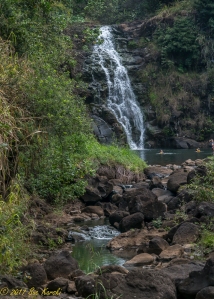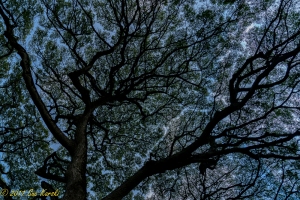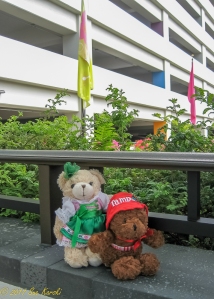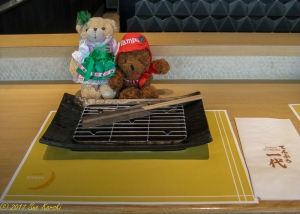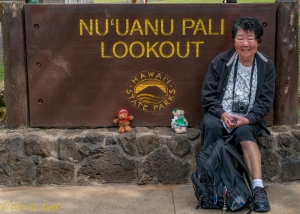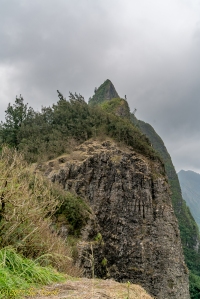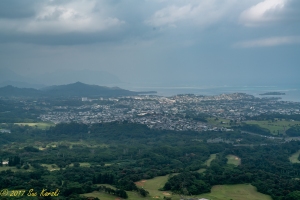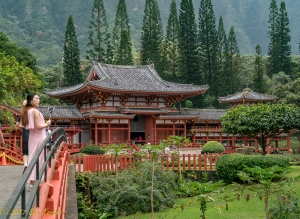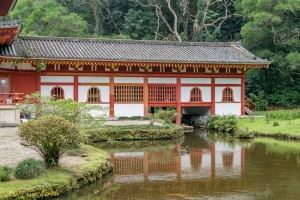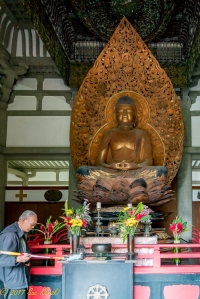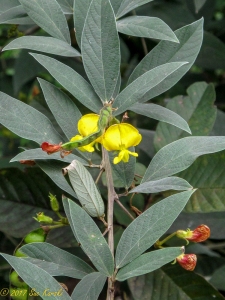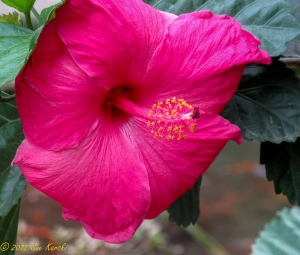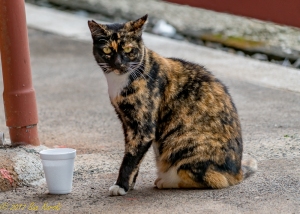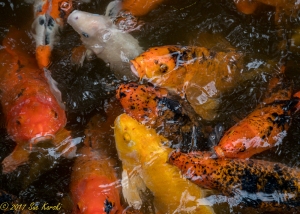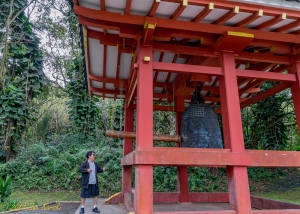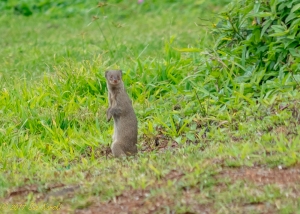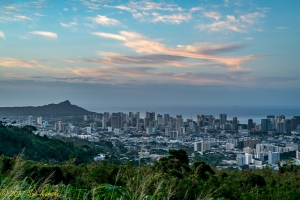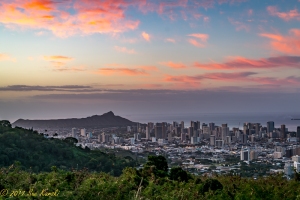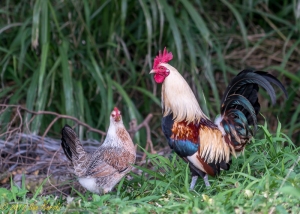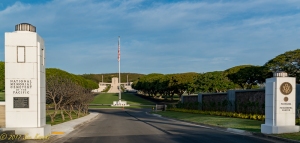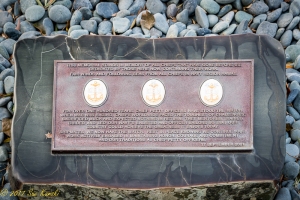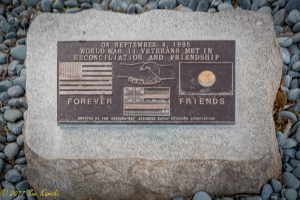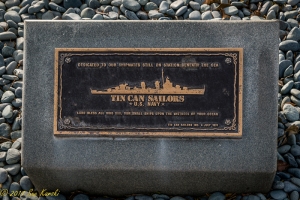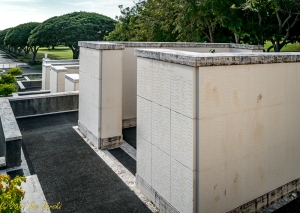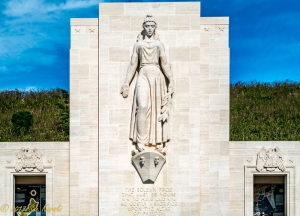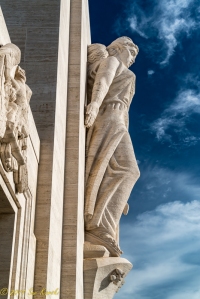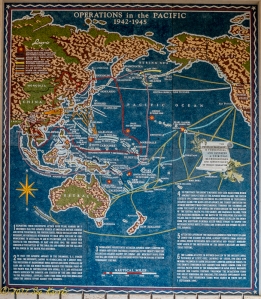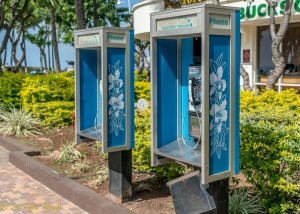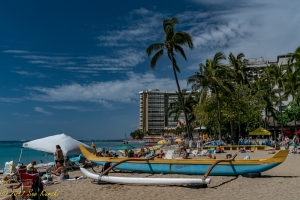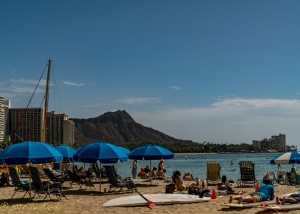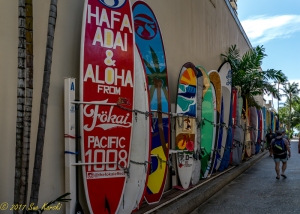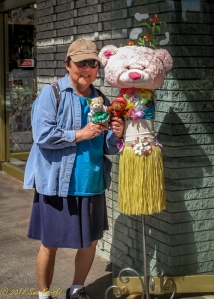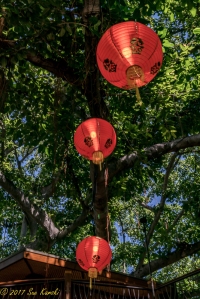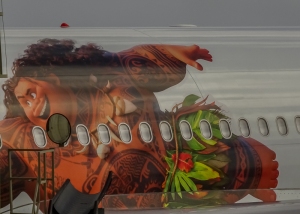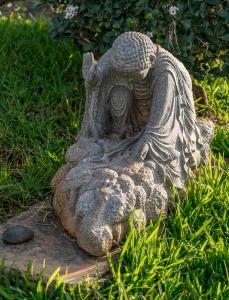We started our day with a trip over to Pearl Harbor – at World War II Valor in the Pacific National Monument, home of the USS Arizona Memorial and the USS Missouri.
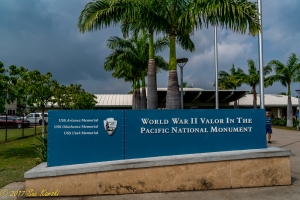
 This has changed so much since I took my father here over 25 years ago. The USS Missouri was not here nor was the USS Bowfin.
This has changed so much since I took my father here over 25 years ago. The USS Missouri was not here nor was the USS Bowfin.
As soon as you enter the park, you can see the USS Bowfin off to the right. You can get tickets to go on board, but we didn’t do this. The USS Bowfin (SS/AGSS-287) is a Balao class submarine, which was commissioned in 1942 and deactivated for the last time in 1971. 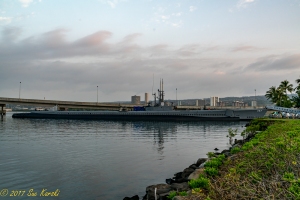
You can walk through two exhibits The Road to War and The Attack, which contain personal memorabilia, dramatic photographs, artifacts of the battle, as well as other exhibits.


This is Sadako’s Cranes. A young school girl, Sadako Sasaki, was a hibakusha (atomic bomb survivor) from the Hiroshima attack, who in 1955 was diagnosed with leukemia. At the hospital she practiced origami, believing the legend which grants one who folds a thousand paper cranes long life, good luck or recovery from illness. Before passing away in October, 1955, she folded over 1300 origami cranes, often from medicine wrappers. The Saski family shared Sadako’s cranes, and her message of hope across the world.
The bell from the Arizona –
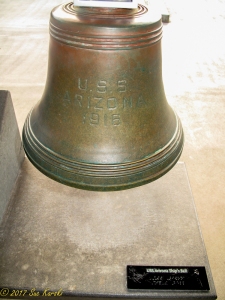
The Arizona’s bell guided the crew back to the ship through thick fog. Paul Stillwell explained, “From time to time a man on board the Arizona would strike the hull’s number – first three gongs and then nine – to serve as a homing beacon for her boats.” This bell was recovered from the ship after the attack. A similar bell removed from the ship a year earlier resides at the University of Arizona in Tucson.
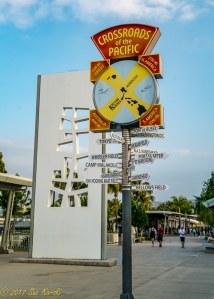
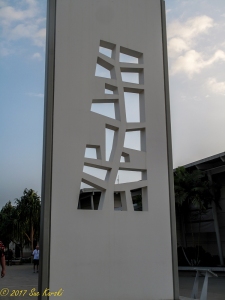
We then watched the video of history of the attack on Pearl Harbor before boarding a water transport to the USS Arizona Memorial.
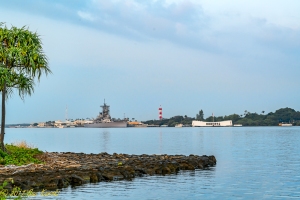
The Arizona Memorial and the USS Missouri along with the tower for the air base.



The Arizona Memorial as we approached. To the right is the actual mooring pier for the USS Arizona. Notice the seven (7) windows on the side of the Memorial which are there to indicate the day of the attack.

The forward gun turret.
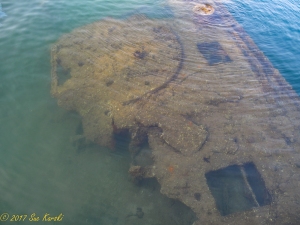
Part of the deck from the Arizona below the water.
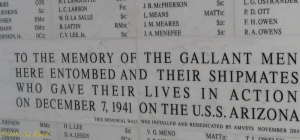

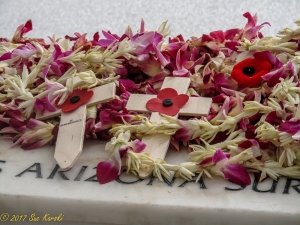
The shrine at the far end is a marble wall that bears the names of all those killed on the Arizona, protected behind velvet ropes. To the left of the main wall is a small plaque which bears the names of thirty or so crew members who survived the 1941 sinking. Any surviving crew members of the Arizona (or their families on their behalf) can have their ashes interred within the wreck, by U.S. Navy divers.
Oil leaking from the sunken battleship can still be seen rising from the wreckage to the water’s surface, sometimes referred to as “the tears of the Arizona” or “black tears.” Concerns have been expressed that the continued deterioration of the Arizona’s bulkheads and oil tanks from saltwater corrosion could pose a significant environmental threat from a rupture, resulting in a significant release of oil. The National Park Service states it has an ongoing program that closely monitors the submerged vessel’s condition.
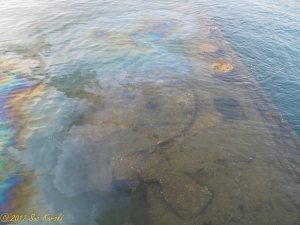
Looking down towards the back of the ship and seeing the oil seeping out.
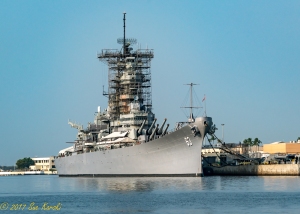
The USS Missouri as seen from the water transport to the Arizona Memorial. We then sailed back to the Memorial Park. We walked around all the different displays which pointed out where all the ships were during that fateful day and then we caught the bus to take us to the USS Missouri.

A statue of Admiral Nimitz at the entrance to the ship with an impressive walkway of flags.

On the dock next to the USS Missouri is a life-sized version of the famous statue – Unconditional Surrender – by Seward Johnson. It depicts a scene from a photo taken in New York City on Aug 14, 1945, the day Japanese surrendered and World War II ended. 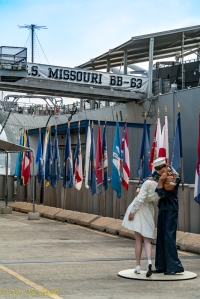
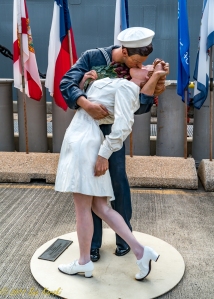
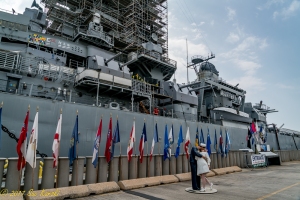
It was unusual view for me, since we have a copy of the statue which is 26 feet tall in Sarasota, FL. I never knew she was holding roses.
We then went on board this impressive ship that was so instrumental in the ending of the war.
USS Missouri (BB-63) (“Mighty Mo” or “Big Mo“) is a United States Navy Iowa class battleship and was the third ship of the U.S. Navy to be named in honor of the US state of Missouri. Missouri was the last battleship commissioned by the United States and was best remembered as the site of the surrender of the Empire of Japan which ended World War II.
Missouri was ordered in 1940 and commissioned in June 1944. In the Pacific Theater of World War II she fought in the battles of Iwo Jima and Okinawa and shelled the Japanese home islands, and she fought in the Korean War from 1950 to 1953.
This is the ship where the Japanese signed the agreement to surrender.

Here is the spot where the table with the agreement of surrender was signed.
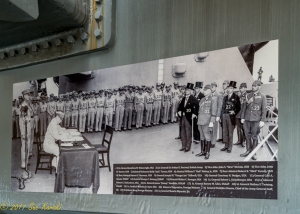
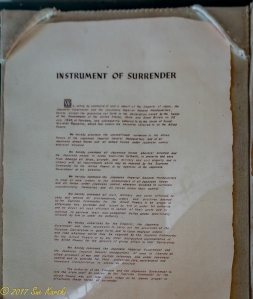
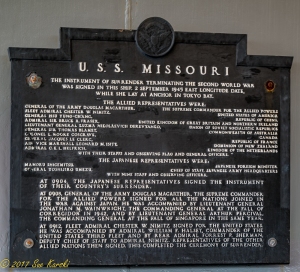

Carol on the bow.
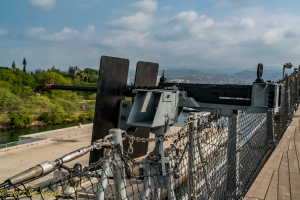
One of the front guns near the bow.

What makes her so impressive is the nine 16 inch 50 cal Mark 7 guns which could fire 2,700 lb (1,200 kg) armor-piercing shells some 20 mi (32.2 km). Her secondary battery consisted of twenty 5 in 38 cal guns in twin turrets, with a range of about 10 mi (16 km).


One of the shells for those big guns.

So you can see the size – here is Carol standing beneath the front guns.
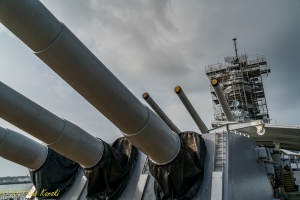
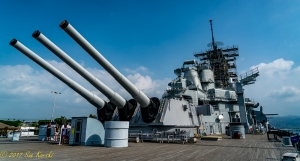
And there were guns on the back of this ship as well –

And the smaller shells
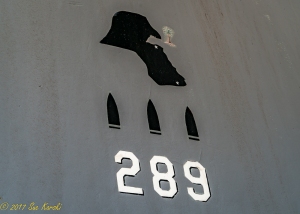
The Missouri fired 289 shells into Iraq during the Persian Gulf War – Desert Shield – Desert Storm.
The Missouri is currently undergoing a number of renovations including fixing the teak decking. They have set off some of the officer cabins, mess hall, and other rooms for the public to get a feel as to how the members of the ship lived during their sailings.
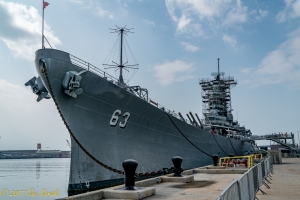
And one last look at the front of this important ship.

And the final view of the Arizona Memorial from the USS Missouri.
There is more to see at this Memorial Park including an airfield and some planes. This is definitely a place you need to visit.
More to see this afternoon, but in another post.
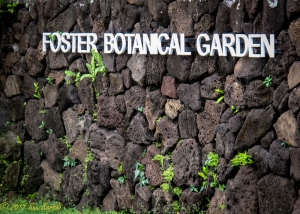
 I have had some interesting food items on this trip that I have never eaten before. Quite an experience.
I have had some interesting food items on this trip that I have never eaten before. Quite an experience.
